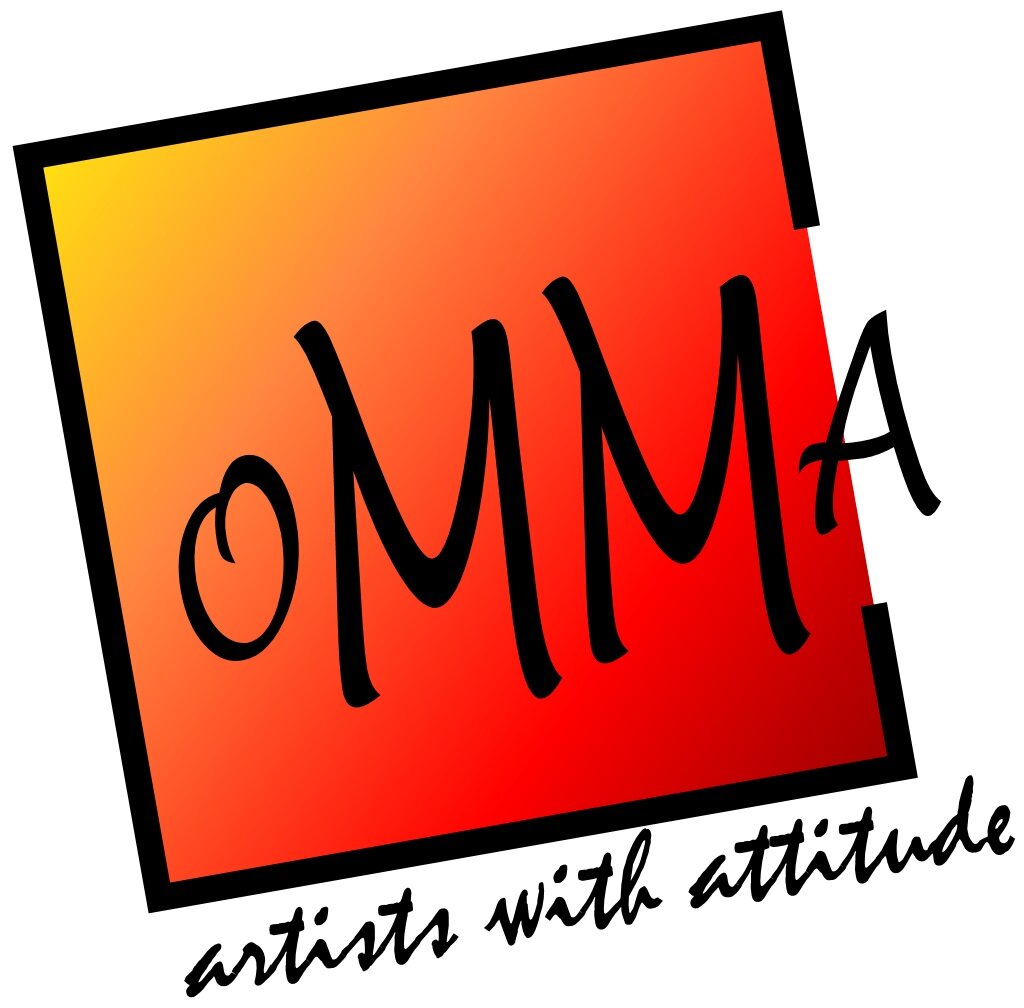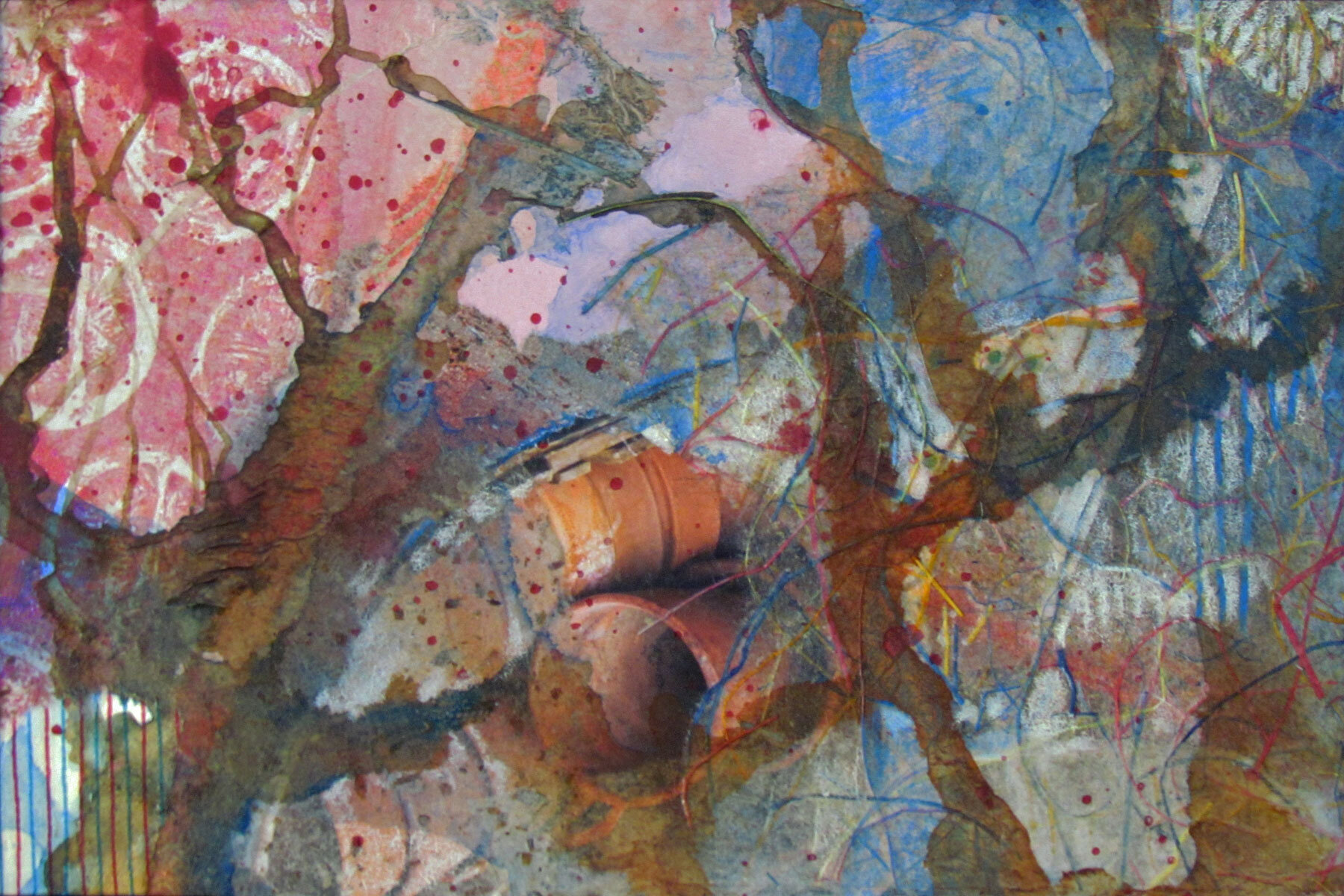June Harman has worked as a commercial artist in Vancouver for 10 years, attaining the level of art director before leaving the field in 1994 to become a full time artist. June is an associate level member in the Federation of Canadian artists and has been a regular juror for FCA shows. Among her many other interests and associations June has served as president of the Foyer Gallery Artists’ Association for 6 years (2016-2022)
With a number of shows coming up this fall, June’s presentation proved to be very informative, timely and enjoyable. Many thanks to June for discussing the short history of art as a commodity, about the business of art and thinking of selling art from the perspective of the buyer and finally, a couple of suggestions of how to price your artwork. June provided an excellent handout, a link to which is included on the left.
The Business of Art.
A presentation by June Harman
OMMA Meeting November 8, 2022
a power point presentation to members on jan. 11, 2022
presentations to and from members
100 days of Covid, a zoom presentation by julia lockie, Nov. 2020
I challenged myself to make a collage every day, partly to get me working in my studio every day, but also to give my life structure and an emotional and creative outlet during this difficult time. It’s been incredibly rewarding in so many ways. I can’t imagine stopping,” said Julia Lockie as she introduced her presentation to 17 OMMA members gathered on Zoom on November 10.
Julia was kind enough to share her video on YouTube for those who were not able to join.
https://www.youtube.com/watch?v=e6O5qxtSm4k&feature=youtu.be
*The painting (above right) is Julia’s Day 19 - Twilight.
SAFETY IN THE STUDIO presentation by Part Durr
Safety Rules
Store flammable materials separately in approved safety containers.
Have the proper fire extinguisher and check regularly.
1. Studio safety
DO NOT WORK IN YOUR LIVING QUARTERS OR KITCHEN.
Do not make dual use of kitchen utensils.
Have bare floors to facilitate cleanup.
Keep materials and equipment out of children's reach.
Keep pets out.
Control the access to your materials and equipment.
Have a sink and running water readily available in case of chemical accidents.
5. Develop good housekeeping habits
Clean up all spills immediately.
Vacuum or wet mop dusts; sweeping just scatters.
Dispose of wastes using proper procedures.
Dispose of chemicals, solvents and other hazar dous materials safely. (Check with your provincial environment department.)
Keep the studio as clean and neat as possible.
2. Develop good work habits
Have adequate ventilation for all activities and especially when working with solvents and other volatile materials.
Plan activities to eliminate unnecessary expo sure or dangerous procedures and processes.
Separate potentially hazardous activities from the general work area to lessen the chances of contamination.
Clean up before leaving the studio.
6. Dress appropriately
Wear work clothes and leave them in the studio so as not to carry out contaminants.
Wash work clothes frequently and separately.
Have and use the proper protective clothing and equipment when needed; gloves and barrier creams for irritating chemicals; goggles for pro tection from splashes, flying particles, etc.; hear ing protection for continuous loud noise; masks and respirators for fumes and dusts, etc.
Keep your safety equipment clean.
Replace absorbing materials frequently according to manufacturer's recommendations.
3. Know materials and processes
Know the components of all your materials, particularly those used frequently or for long periods.
Ask suppliers or manufacturers for "material safety data sheets".
Replace hazardous materials with safer equiva lents. Avoid asbestos.
Use all hazardous materials sparingly and in the least dangerous form.
Read all labels; follow recommended proce dures carefully.
Use the least hazardous techniques and pro cesses.
Develop a small safety file or library for easy, quick consultation.
7. Maintain good personal hygiene
Never eat, drink or smoke in the studio. Do not allow others to eat, drink, or smoke in your studio.
Do not wash your skin with solvents.
Treat injuries or irritations immediately so they do not become contaminated.
Wash extra carefully after working with hazar dous materials.
8. Reduce physical hazards
Tie back or cover long hair.
Do not wear loose clothing, rings, necklaces, etc. which might get caught in machinery.
Have your wiring in good repair to avoid shorts and the danger of fire.
Adequately ground all electrical equipment.
Learn the proper ways to move or lift heavy materials and equipment by hand or use proper moving equipment such as trucks, trolleys and pulleys.
4. Use safe storage procedures
Use proper containers of metal or plastic.
Do not use milk jugs and soft drink bottles.
Cover and label everything accurately.
Store all liquids in sealed containers.
CARFAC © 1985
P.DURR
Art and Creative Material Institute (ACMI) Labels
The Art and Creative Materials Institute (ACMI) is an independent U.S. association that provides seals on products they have evaluated and tested, taking into account how the product is used as well as its chemical content. So, when you see the seal, you know it has been evaluated and tested for both acute and chronic potential hazards.
The Art and Creative Materials Institute (ACMI) maintains that the "knowledge of materials and their proper use makes them safe. Be sure to read the label on all products you use so you will know they have been evaluated and are non-toxic or need special handling to avoid possible health potential hazards from misuse."
Although it is not a legal requirement in Canada, many art materials you buy will have one of the following ACMI labels on them: OTR
According to the ACMI, the AP (Approved Product) seal "identifies art materials that are safe and that are certified in a toxicological evaluation by a medical expert to contain no materials sufficient quantities to be toxic or injurious to humans, including children, or to cause acute or chronic health problems."
According to the ACMI, the CL (Caution Required) seal "identifies products that are certified to be properly labelled in a program of toxicological evaluation by a medical expert for any known health risks and with information on the safe and proper use of these materials."
HATIRA
ASTM D4232
On the label, you may also see Conforms to ASTM D4236. This does not mean the product is "non-toxic." It means that the product has been reviewed by a qualified toxicologist, that the label lists all the ingredients that are potential acute or chronic hazards and, if the product does contain a substance with an acute or chronic hazard, it comes with instructions for using it safely.
Safety Rules
Store flammable materials separately in approved safety containers. Have the proper fire extinguisher and check regularly.
1. Studio safety
DO NOT WORK IN YOUR LIVING QUARTERS OR KITCHEN.
Do not make dual use of kitchen utensils.
Have bare floors to facilitate cleanup.
Keep materials and equipment out of children's reach.
Keep pets out.
Control the access to your materials and equipment.
Have a sink and running water readily available in case of chemical accidents.
5. Develop good housekeeping habits
Clean up all spills immediately.
Vacuum or wet mop dusts; sweeping just scatters.
Dispose of wastes using proper procedures.
Dispose of chemicals, solvents and other hazar dous materials safely. (Check with your provincial environment department.)
Keep the studio as clean and neat as possible.
2. Develop good work habits
Have adequate ventilation for all activities and especially when working with solvents and other volatile materials.
Plan activities to eliminate unnecessary expo sure or dangerous procedures and processes.
Separate potentially hazardous activities from the general work area to lessen the chances of contamination.
Clean up before leaving the studio.
6. Dress appropriately
Wear work clothes and leave them in the studio so as not to carry out contaminants.
Wash work clothes frequently and separately.
Have and use the proper protective clothing and equipment when needed; gloves and barrier creams for irritating chemicals; goggles for pro tection from splashes, flying particles, etc.; hear ing protection for continuous loud noise; masks and respirators for fumes and dusts, etc.
Keep your safety equipment clean.
Replace absorbing materials frequently according to manufacturer's recommendations.
3. Know materials and processes
Know the components of all your materials, particularly those used frequently or for long periods.
Ask suppliers or manufacturers for "material safety data sheets".
Replace hazardous materials with safer equiva lents. Avoid asbestos.
Use all hazardous materials sparingly and in the least dangerous form.
Read all labels; follow recommended proce dures carefully.
Use the least hazardous techniques and pro cesses.
Develop a small safety file or library for easy, quick consultation.
7. Maintain good personal hygiene
Never eat, drink or smoke in the studio. Do not allow others to eat, drink, or smoke in your studio.
Do not wash your skin with solvents.
Treat injuries or irritations immediately so they do not become contaminated.
Wash extra carefully after working with hazar dous materials.
8. Reduce physical hazards
Tie back or cover long hair.
Do not wear loose clothing, rings, necklaces, etc. which might get caught in machinery.
Have your wiring in good repair to avoid shorts and the danger of fire.
Adequately ground all electrical equipment.
Learn the proper ways to move or lift heavy materials and equipment by hand or use proper moving equipment such as trucks, trolleys and pulleys.
4. Use safe storage procedures
Use proper containers of metal or plastic.
Do not use milk jugs and soft drink bottles.
Cover and label everything accurately.
Store all liquids in sealed containers.
CARFAC © 1985
P.DURR
Art and Creative Material Institute (ACMI) Labels
The Art and Creative Materials Institute (ACMI) is an independent U.S. association that provides seals on products they have evaluated and tested, taking into account how the product is used as well as its chemical content. So, when you see the seal, you know it has been evaluated and tested for both acute and chronic potential hazards.
The Art and Creative Materials Institute (ACMI) maintains that the "knowledge of materials and their proper use makes them safe. Be sure to read the label on all products you use so you will know they have been evaluated and are non-toxic or need special handling to avoid possible health potential hazards from misuse."
Although it is not a legal requirement in Canada, many art materials you buy will have one of the following ACMI labels on them:
OTR
According to the ACMI, the AP (Approved Product) seal "identifies art materials that are safe and that are certified in a toxicological evaluation by a medical expert to contain no materials
sufficient quantities to be toxic or injurious to humans, including children, or to cause acute or chronic health problems."
According to the ACMI, the CL (Caution Required) seal "identifies products that are certified to be properly labelled in a program of toxicological evaluation by a medical expert for any known health risks and with information on the safe and proper use of these materials."
HATIRA
ASTM D4232
On the label, you may also see Conforms to ASTM D4236. This does not mean the product is "non-toxic." It means that the product has been reviewed by a
qualified toxicologist, that the label lists all the ingredients that are potential acute or chronic hazards and, if the product does contain a substance with an acute or chronic hazard, it comes with instructions for using it safely.





